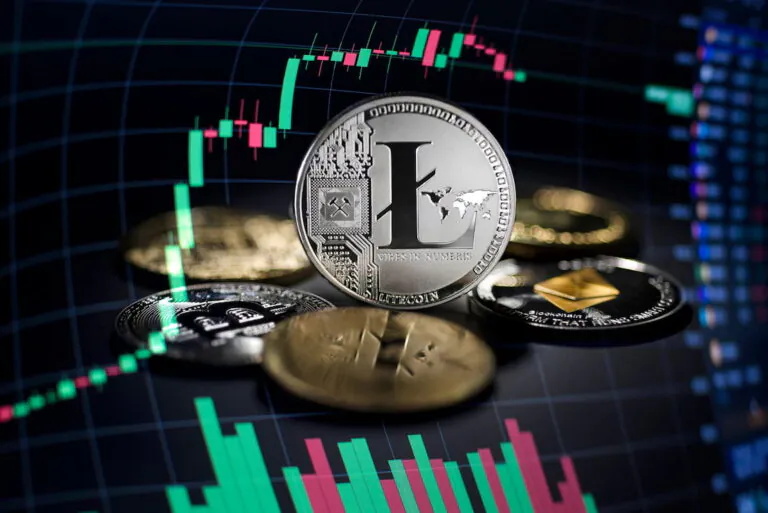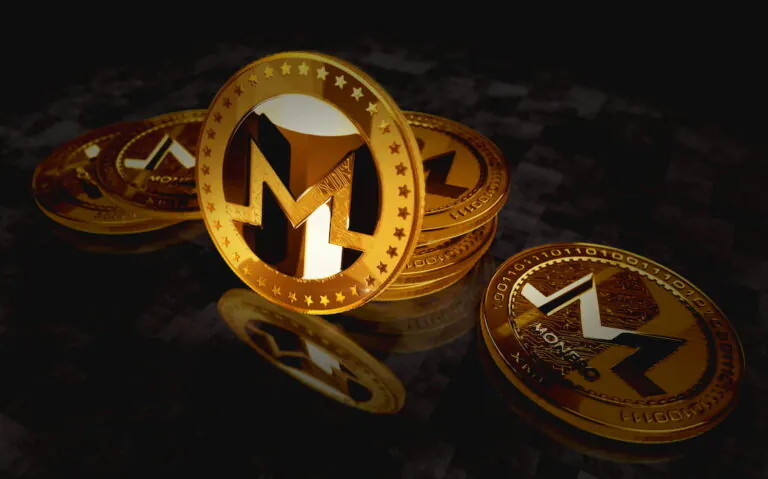Litecoin is one of the first open-source altcoins based on the original Bitcoin code. It was initially a strong competitor to the first cryptocurrency. However, as the cryptocurrency market expanded, Litecoin’s popularity gradually declined.

What is NEAR Protocol (NEAR)? Features and ecosystem of the project
What is NEAR (NEAR)?
NEAR is an advanced next-generation blockchain platform that aims to expand the concept of Web3 and make it accessible to everyone.
NEAR is an independent first-level blockchain, which indicates its freedom from other blockchains. Its unique scaling mechanism, known as “Nightshade sharding”, allows for high throughput and scalability. In addition, NEAR offers simple named accounts, making it easy for new users to interact. All this contributes to the mass adoption of the concept of Web3.
NEAR also serves as a robust and scalable development framework decentralized applications (dApps) new type. The NEAR protocol is designed to simplify the development process for programmers by allowing them to write JavaScript code and use familiar tools. There are now many projects that are actively creating amazing decentralized applications on the NEAR platform.
Origin and purpose of the NEAR protocol
NEAR was founded by Alexander Skidanov and Ilya Polosukhin, both from Ukraine and with degrees in computer science and mathematics. They started developing the NEAR protocol in 2017 after their involvement in the open source development of Ethereum. The NEAR mainnet was launched in August 2020.
Ilya Polosukhin also had experience working with the open source Tensor Flow machine learning library. They founded their company in San Francisco, which is typical for developers looking to push the boundaries of software. Skidanov and Polosukhin aimed to create an improved version of Ethereum without relying on layer 2 scalability.
In contrast, the NEAR protocol is based on the scalability of the main chain (layer 1). This allows it to offer enterprise-level performance right from the start, reaching up to 100,000 transactions per second after a full upgrade. As a result, NEAR has become popular around the world for mass deployment of decentralized applications (dApps) and Web3, attracting over 1,700 active developers every month.
NEAR has received $566,000,000 in backing from venture capitalists to date, including industry leaders such as Andreessen Horowitz, DCG, Coinbase Ventures, Tiger Global, Accomplice, Pantera Capital, Electric Capital, Blockchange, Dragonfly Capital, Blockchain.com and more.
A Brief History of NEAR
2017 – It all started with artificial intelligence. Ilya Polosukhin and Alexander Skidanov launched NEAR.ai to investigate program synthesis and predicted the onset of the “singularity”. In the course of their work, they tried to use Ethereum to pay out depositors, but soon realized that this blockchain was not suitable for their tasks.
2018 – The birth of a vision. They made the decision to create their own blockchain, and so the NEAR protocol was born. Their idea was to provide developers with an easy way to create decentralized applications that can be easily scalable.
2019 — Foundation of the Foundation. The NEAR Foundation was established as a non-profit organization that promotes the development of the NEAR ecosystem and protocol.
2020 – Launch of NEAR mainnet. In April 2020, the main NEAR network was launched, and in September 2020 it was fully managed by the community. In October 2020, a vote was held to allow the transfer of tokens.
2021 — First stage of sharding. NEAR launched the first stage of sharding. This unique technology makes it easy to scale the NEAR blockchain.
2022 – Completion of the funding round. Following two rounds of funding in 2022, NEAR has raised $500,000,000 to support further development of the protocol and ecosystem.
How does the NEAR protocol work?
Similarly Ethereum, Cardano and Tron, NEAR can be defined as the base layer of the blockchain, meaning it serves as the foundation for building and deploying other applications.
NEAR uses a technology known as Nightshade to achieve high throughput. In this scalable solution, separate sets of validators process transactions in parallel on multiple sharded chains, increasing the overall throughput of transactions on the blockchain. The difference between this approach and other blockchains is that each segment forms a part of the next block, called a “chunk”. Chunks are processed and stored on the NEAR blockchain to complete the transactions they contain.
The NEAR protocol is designed to simplify the work of developers and provide them with a powerful tool for creating next-generation applications. With a contract-based account model, developers can create advanced applications that can sign transactions on behalf of users, allowing them to execute agreements without the user having to be physically present to confirm the action.
NEAR Tokenomics
NEAR protocol like other public networks Proof-of-Stake, uses its own cryptocurrency called NEAR to incentivize decentralization. Validators, like bitcoin miners, are rewarded with NEAR when they process transactions. In turn, the validators issue new tokens NEAR by processing transactions and earning rewards in NEAR.
NEAR tokenomics is predictable, similar to how the Federal Reserve stimulates the economy by infusing trillions of dollars. However, there is a difference: NEAR tokenomics is more predictable and consists of the following elements:
Maximum supply of NEAR tokens is 1,000,000,000.
In circulation less than 90,000,000 NEAR remains, as negotiable NEAR offer is 91%.
Market capitalization of NEAR reached $1,566,400,890, with NEAR coin value $1.57 at the time of writing.
NEAR Ecosystem
The NEAR Protocol ecosystem is a dynamic community with over 550,000 members. They played a key role in funding 125 DAOs totaling $5,000,000, supporting a wide range of decentralized applications (dApps) on the NEAR blockchain. These applications cover areas such as lending, trading NFT, games, launch pads and exchanges. One of the main trackers and aggregators for all dApps running on NEAR is AwesomeNear.
There are several popular apps in the NEAR ecosystem including:
- Paras: This is an NFT marketplace that uses IPFS decentralized storage and has its own PARAS token. Interesting collections of NFTs can be found here, and NEAR also offers its version of CryptoPunk, known as NPunks.
- Flux: This is an open market forecasting protocol powered by FLX tokens. Users can take part in predicting various events and market conditions using this protocol.
- Burrow: This lending protocol on NEAR is reminiscent of the popular Aave protocol on Ethereum. It provides the ability to receive and provide loans using various digital assets.
- Ref Finance: This is a decentralized token exchange similar to Uniswap. Here, users can easily and securely exchange various tokens for NEAR.
To facilitate interaction with the dApps ecosystem on Ethereum, NEAR launched the Rainbow Bridge, which allows you to exchange cryptocurrencies between networks. Users can transfer their tokens from Ethereum to NEAR by locking them on Ethereum and then receiving equivalent NEAR tokens through the NEAR wallet to use in the NEAR ecosystem.
How is the NEAR token used?
The NEAR token has several important use cases in the NEAR protocol ecosystem. First, it is used as a fee for the fees required to process transactions on the network. These fees help maintain and protect the NEAR blockchain.
Most of the fees charged for transactions are burned, thereby reducing the overall supply of the NEAR token. However, a small portion of the commissions are used to reward developers whose smart contracts were involved in these transactions. It’s a way to incentivize developers and support the growth of the NEAR ecosystem.
NEAR inflation is capped at 5% per annum. This inflation is recalculated every half day based on the commissions collected during that period. It is important to note that these commissions are excluded from the calculation of inflation, which helps to reduce its level. This event encourages the attraction of new users to the system. New tokens created as a result of inflation are used to pay block rewards on the NEAR network.
Where to buy NEAR?
If you are interested in participating in the NEAR ecosystem or using decentralized applications developed on the NEAR platform, you will need NEAR tokens.
You can earn them by participating in the development bounty program, by staking and participating in the management of the NEAR community. However, the easiest way to get tokens is to purchase them on a supported exchange such as Binance, Huobi Global, or OKEx, or exchange them on a cryptocurrency exchange service Coin24.io.
The Future of the NEAR Protocol
NEAR Protocol is a project that is certainly attractive and promises to be unusual and promising. As a blockchain project, it has great chances for future success. The developers have already made significant efforts to attract a wide audience. They simplify the use of the system, reduce the financial burden by reducing commissions. Therefore, it is expected that the project will continue to succeed steadily and strengthen its position in the market.
The NEAR Protocol cryptocurrency has the potential for future growth and development. There are several factors that can contribute to this:
- Ecosystem expansion: With new dApps and projects on the NEAR platform, the ecosystem will continue to grow, attracting more users and developers.
- Technological Innovations: NEAR Protocol actively implements new technologies and improvements that improve network performance, scalability, and security.
- Growing interest in decentralized applications: Growing interest in decentralized applications and DeFi may lead to an increase in demand for the NEAR platform and the NEAR token.
- Expanding the user base: Bringing new members to the NEAR network can drive growth and increase the price of the token.
- General growth of the cryptocurrency market: the cryptocurrency market continues to develop and attract new investors, which can positively affect the price of the NEAR token.
However, it should be remembered that the cryptocurrency market is subject to volatility, and the price of the NEAR token may fluctuate depending on various factors, such as the general market situation, news about the project, competition with other blockchain platforms, and other external factors.


